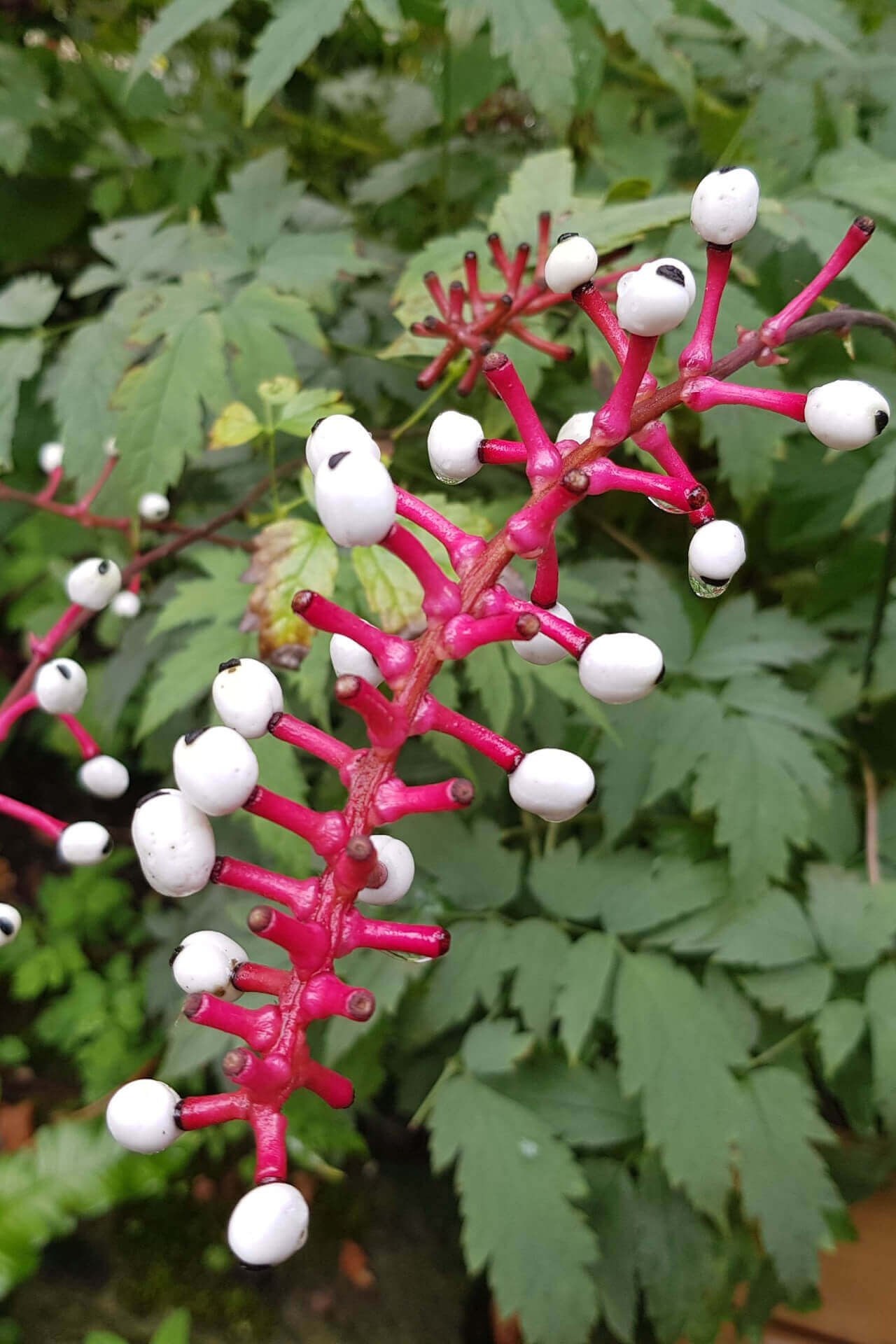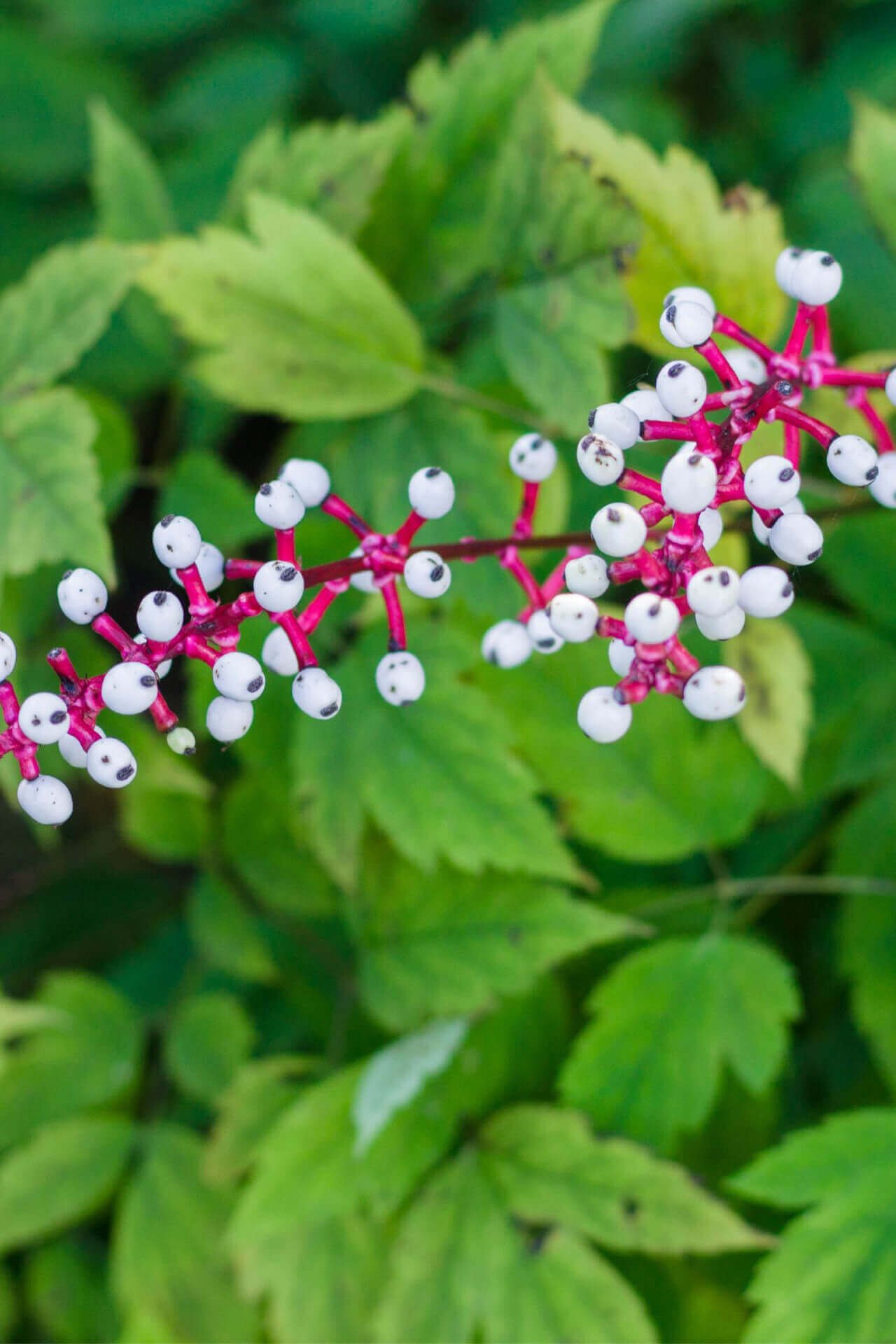



White Baneberry
This plant ships:
NowWe sell bare root plants - click here to see what you'll receive
Baneberry Doll Eye: Actaea pachypoda
Baneberry Doll's Eye reaches 12" and produces white berries with black pupils, giving it the common name "dolly eyes." This stunning plant can add unique and eye-pleasing attributes to any landscaping design. Native to North America, this perennial herbaceous plant possesses several key features that make it a valuable addition to gardens and landscapes. From its striking appearance to its ecological benefits, this perennial offers a plethora of reasons why it is a sought-after choice for gardeners and landscape enthusiasts.
Baneberry Doll Eye Is a Unique Native Perennial
It gets its unusual name from its distinctive look. The plant's identifying characteristic is clusters of white seed pods resembling doll eyes. In the fall, this plant produces sprouts of berries on bright red stalks. The white seeds hang from fleshy, red stems, and a black dot is at the tip of each seed. These unique berries last a few months, so they can decorate your yard until the first frost.
Actaea Pachypoda is known for its odd-looking wildflowers blooming in late spring. This plant features clusters of small white, fluffy flowers and a delicate rose-like fragrance. While most perennials are grown for their vibrant flowers and lush foliage, this plant is famous for its interesting-looking flowers.
Native to North America, these flowering plants typically grow in the Midwestern and Eastern United States and Southern Canada. If you want to add one to your landscape, you must plant the seed in late fall. Once the seed is planted, it will take some time to bloom, usually during the second spring. However, these flowers turn into black-spotted berries borne on red stems during the midsummer.
Though they are a unique addition to any garden, all parts are toxic to humans, and the fruits are only ornamental. Conversely, they offer plenty of food to birds and other wildlife, which is one of the reasons why they are grown in front and backyards.
Features of Baneberry Doll Eye
It is a hardy plant that can easily thrive in U.S.D.A. zones 3-8. This woodland plant grows best in partially-shaded and fully-shaded gardens in rich, moist but not soggy, and well-drained soil. You can also grow these plants indoors with the same growing conditions.
Once established, caring for them is a breeze, making it an excellent option for even first-time gardeners. Since they prefer to grow in moist and rich soil, water the plants regularly, especially during the dry and hot days in summer.
The Growth Of This Stunning Native Perennial
When grown in ideal conditions, they can reach 1.5 to 3.5 feet in height and 1 to 2 feet in width.
While you can get this rare native for sale from TN Nursery, you might want to check out other best ornamental flowers, including Wild Geranium, Blue Cohosh, and Hepatica.
What are the Characteristics of them
They have white blooms that resemble eyes with thin stems and dark green foliage. The plants grow up to two feet tall, with multiple shoots growing from a single base.
Where is it found
Look for them in the damp soils of the woodlands, where it grows in dappled sunlight. This plant is mainly located in the east of North America and adds a good charm to any environment it grows in.
How can I take care of it
This charming plant needs a little warmth and partly shaded to fully shaded areas. Grow in good, draining, moist soil as this replicates its natural woodland environment. Water the plants moderately to ensure that the soil does not become waterlogged.
Can it Grow Indoors
They prefer shaded, cool outdoor conditions but can easily be grown indoors, too. Avail essential requirements such as indirect sunlight, and soil that must always be moist for these plants to thrive.
What is the best fertilizer for it
Baneberry doll eye can do well when applied with a balanced fertilizer, 10-10-10, and organic fertilizers such as bone meal. Do not overfertilize the plants.
| Planting zone | [3, 4, 5, 6, 7, 8] |
|---|---|
| Bloom season | Summer |
| Bloom color | White |
| Height At Maturity | Over 12" |






White Baneberry
This plant ships:
Now| Planting zone | [3, 4, 5, 6, 7, 8] |
|---|---|
| Bloom season | Summer |
| Bloom color | White |
| Height At Maturity | Over 12" |

